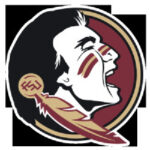The two-dollar bill, often seen as somewhat uncommon, holds a unique place in U.S. currency. Many people wonder, “Where Can I Get Bills?” While they are still in circulation and readily available, knowing the right places to look can make obtaining them easier. Understanding the distribution system of U.S. currency can shed light on where you can reliably find these interesting banknotes.
The U.S. currency system is managed by the Federal Reserve System, which plays a crucial role in ensuring that all denominations, including the $2 bill, are available to the public. The Board of Governors of the Federal Reserve System is the official issuer of Federal Reserve notes, which includes all paper money in the United States. They are responsible for maintaining an adequate supply of all denominations to meet the demands of the economy.
To manage the physical distribution of currency, the Federal Reserve System operates through the Cash Product Office (CPO) and twelve regional Federal Reserve Banks. The CPO provides strategic direction and formulates policies for cash operations across the Federal Reserve System. They work to ensure public confidence in U.S. currency by overseeing the efficient and effective distribution of banknotes and coins.
The most direct way for the public to access $2 bills, or any denomination of U.S. currency, is through depository institutions, which are your local banks and credit unions. The twelve regional Federal Reserve Banks are responsible for distributing Federal Reserve notes to these depository institutions. Banks order currency from the Federal Reserve Banks to meet the demands of their customers. This is how cash, including $2 bills, enters into general circulation.
When banks need to replenish their cash supplies, they place orders with their regional Federal Reserve Bank. These Reserve Banks then fulfill these orders, drawing from their inventory of new and circulated currency. Within these Reserve Banks, high-speed processing machines are used to verify the authenticity and condition of banknotes. Genuine notes in good condition are then sent to banks to fulfill their orders. This system ensures that banks can readily supply various denominations, including $2 bills, to their customers.
Therefore, to answer the question “where can I get $2 bills?”, the most straightforward answer is your local bank. You can simply go to the teller and request $2 bills. While not as commonly requested as $1, $10, or $20 bills, banks generally have access to all denominations and can fulfill your request, depending on their current inventory. It might be helpful to call your bank in advance, especially if you need a large quantity of $2 bills, to ensure they can accommodate your request.
In conclusion, while $2 bills might seem elusive, they are part of the standard U.S. currency and can be obtained through the established banking system. By understanding the role of the Federal Reserve and its distribution network, you can confidently approach your local bank or credit union when you need to get your hands on some two-dollar bills. They are the primary point of access for all denominations of currency, ensuring that even the less common $2 bill is available to those who seek them.
Reference:


